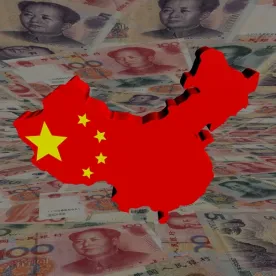In a decision released by the Intellectual Tribunal of China’s Supreme People’s Court (SPC) on July 23, 2021, the SPC explained that a granted utility model patent may be unenforceable when a corresponding invention patent application was rejected during substantive examination. The plaintiff had filed both utility model and invention patent applications on the same day for the same invention. While the utility model granted, the invention patent application was rejected in substantive examination for lacking novelty and inventiveness.

The appellant Anhui Langting Landscaping Engineering Service Co., Ltd. (hereinafter referred to as Langting Company) and the appellee Sun Xixian were involved in a utility model patent infringement lawsuit of a utility model patent number ZL200920242493.4 entitled Plant Grow Box. The patentee, Sun Xixian, believed that Langting Company infringed claims 1 – 5 of the patent and filed a lawsuit with the Hefei Intermediate People’s Court of Anhui Province (hereinafter referred to as the court of first instance), requesting an injunction and to destroy infringing products and special molds, and compensate its economic losses and investigation and evidence collection costs totaling more than 150,000 RMB. The court of first instance held that Langting Company had committed infringement, but because the patent had expired, no injunction was awarded and the Court only awarded Sun Xixian economic losses and reasonable expenses in safeguarding his rights totaling 60,000 RMB. Langting Company appealed to the Supreme People’s Court, claiming that Sun Xixian had applied for both invention patents and utility model patents (i.e., patents involved in the case) for the same technical solution. It showed that the patent did not meet the conditions for granting patent rights, and requested to revoke the original judgment and reject Sun Xixian’s litigation request. The Supreme People’s Court ruled on December 29, 2020 to revoke the original verdict and dismiss Sun Xixian’s litigation request.
Claim 1 of the utility model reads:
1. A plant grow box includes a box body and a hole at the bottom of the box body, characterized in that the box body is composed of a wall surface and a bottom surface, and the bottom surface of the box body has an upward convex hole.
Unsurprisingly, the invention patent application was found to lack novelty and inventiveness and was rejected. In contrast, the corresponding utility model granted as it was not examined. Not happy with the Patent Office’s decision, Sun filed a request for reexamination with the Patent Reexamination Board on June 25, 2014. The Patent Reexamination Board on April 29, 2014 maintained the rejection decision made by the State Intellectual Property Office on April 29, 2014. Sun then filed an administrative lawsuit with the Beijing Intellectual Property Court. On September 4, 2018, the Beijing Intellectual Property dismissed Sun’s lawsuit. The administrative judgment of the first instance was upheld by the Beijing Higher People’s Court. After reviewing the administrative judgment of the second instance, the SPC issued an administrative ruling rejecting Sun’s application for retrial.
On May 29, 2018, the State Intellectual Property Office also issued an evaluation report on the utility model patent involved in this case and concluded that the claims lack novelty and/or inventiveness.
The SPC reasoned, although there are differences between the inventiveness requirements of invention and utility model patents, this difference is mainly reflected in the technical field of the prior art and the number of prior art references used. In this case, only one prior art reference was used, and the technical field of the reference is the same as that of the utility model patent in this case, and at the same time, the reference is also the same reference that determined that claim 1 of the above-mentioned invention patent is not novel. Further, during examination of the invention patent application, Sun also acknowledged the lack of patentability by combining claims 1 – 4, which were still rejected by the Patent Office. Finally, the evaluation report issued by the Patent Office also proved that the validity of of the utility model patent was questionable.
Accordingly, the SPC held that in the litigation for infringement of utility model patent rights, if the utility model patent is obviously or highly likely to belong to a technical solution that should not be protected by a utility model patent, it does not get protection under the patent law. In this case, considering the above circumstances comprehensively, the SPC determined that all the claims of the utility model patent involved are obvious or have a high probability of not being novel or inventive, and taking into account the fact that the utility model patent involved has expired, the utility model patent involved does not belong to the “legitimate rights and interests” protected by the patent law. Therefore, claims 1-5 of the utility model patent involved in the case cannot be used as the basis for Sun’s request for enforcement, and his litigation claims based on the claims 1-5 of the utility model patent involved are all be rejected. On this basis, the SPC ruled for Anhui Langting Company and rejected all claims of Sun Xixian.
The decision is (2020)最高法知民终699号 and the full text is available here (Chinese only).



 />i
/>i

